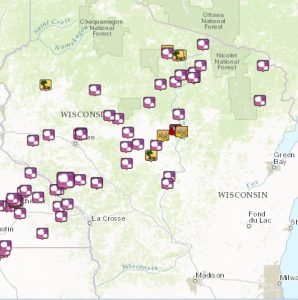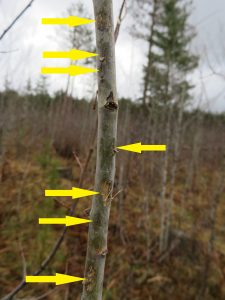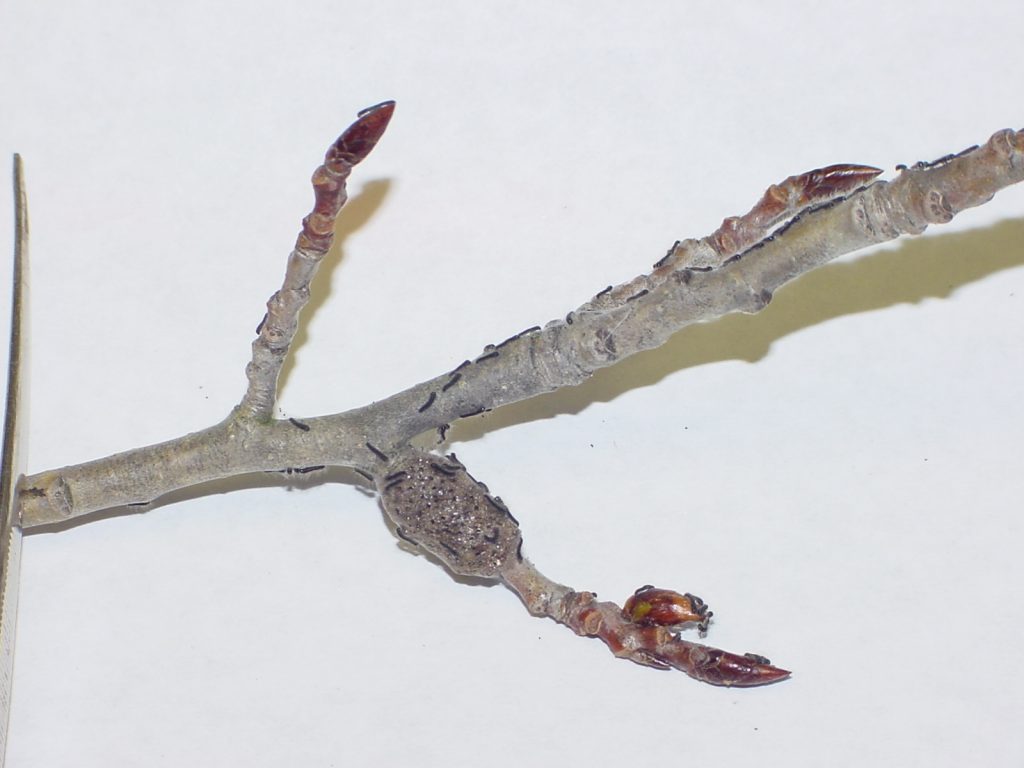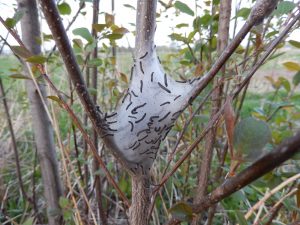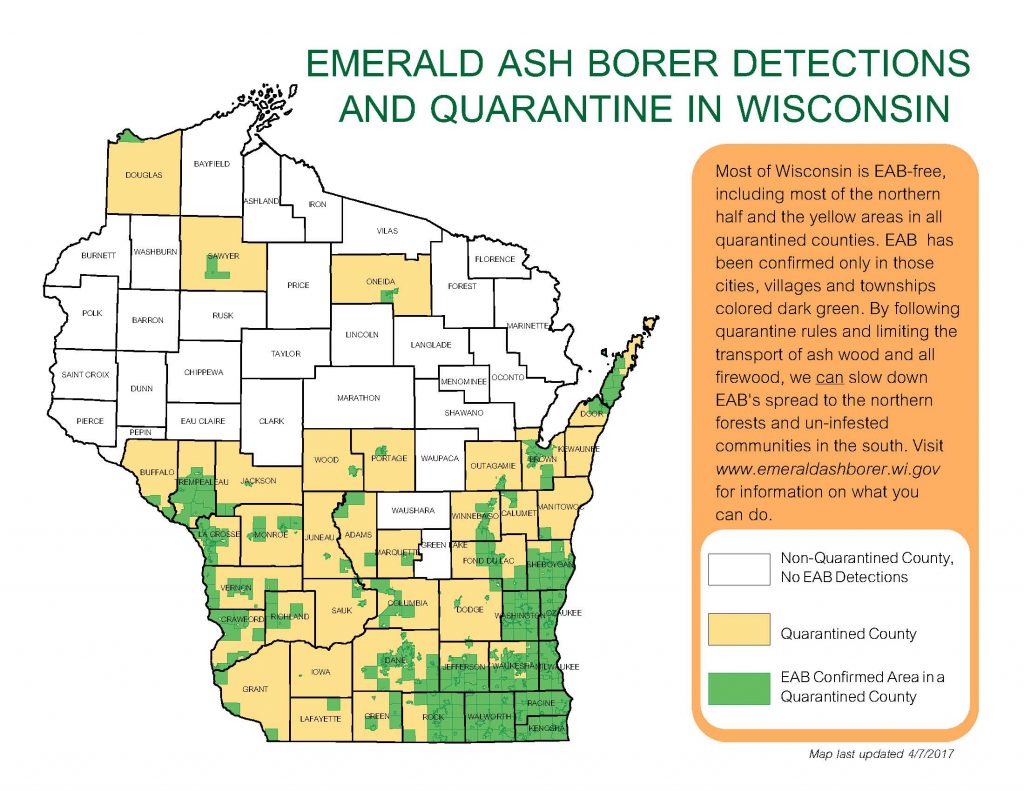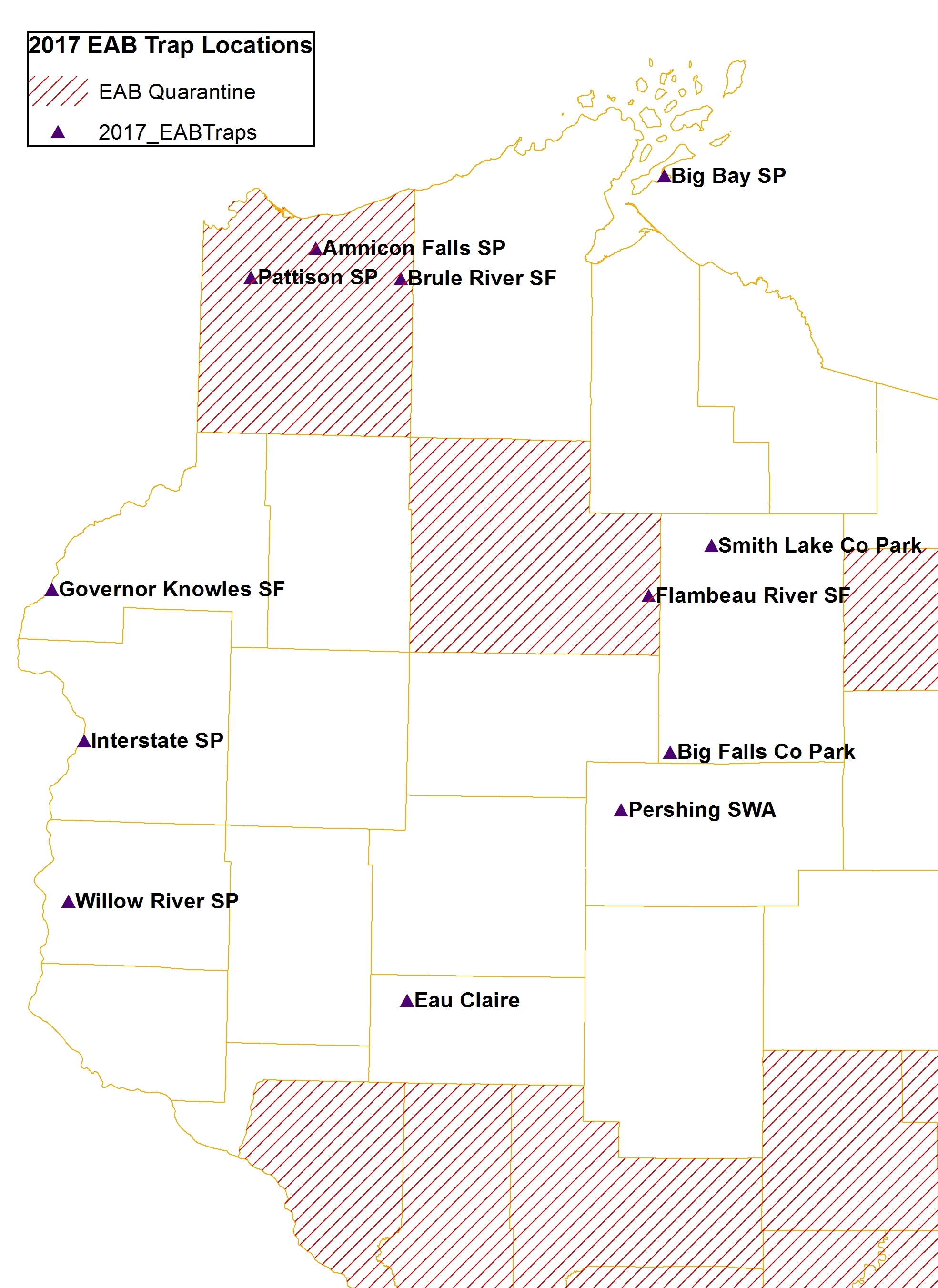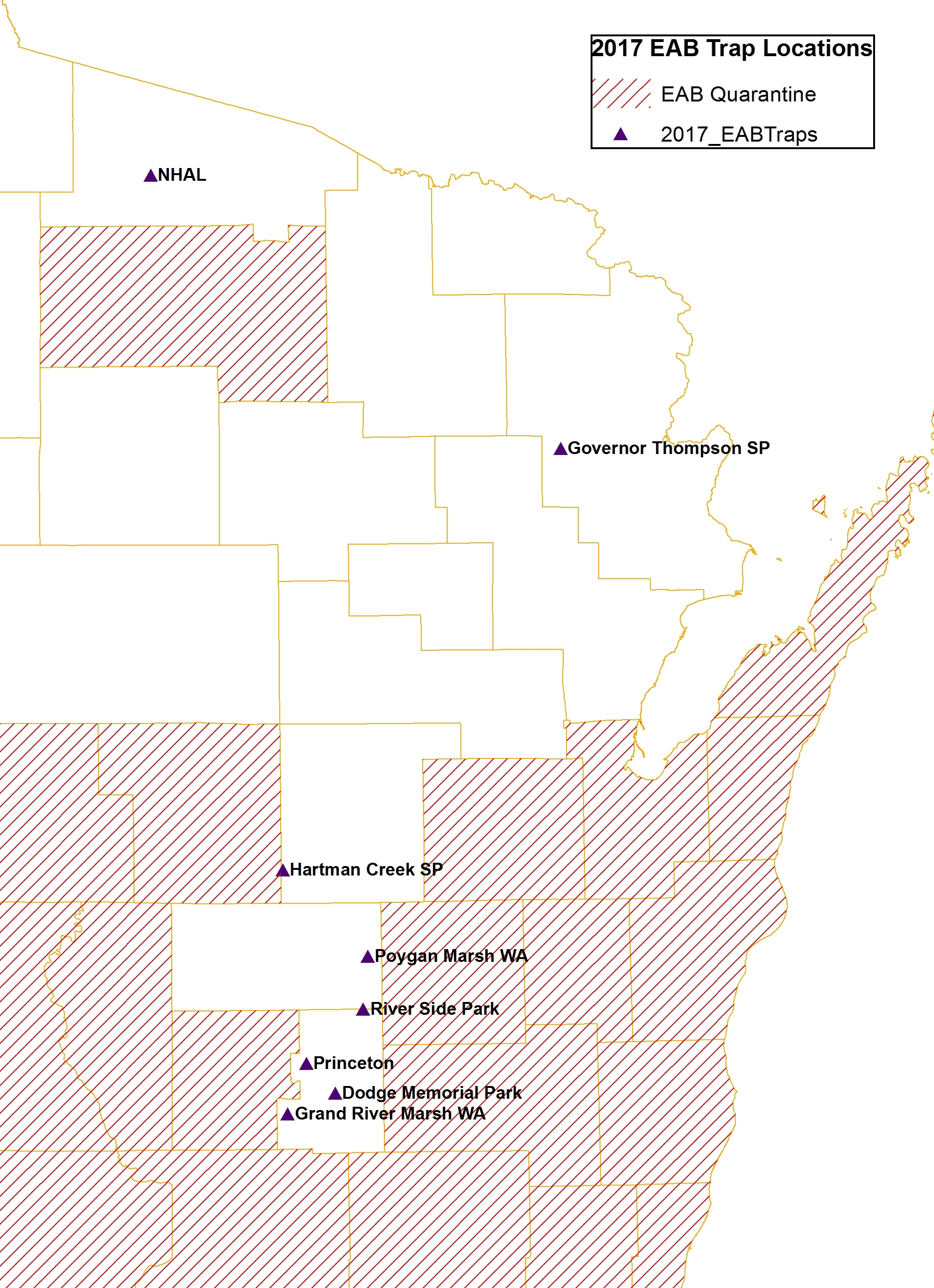
Vin Vasive is the spokesman for invasive insects at USDA APHIS. He is made up of invasive species. This USDA APHIS poster was designed by Deb Levy Creative.
April is invasive plant pest and disease awareness month, and May 21-27 is EAB awareness week.
It’s spring, and a good time to remember that invasive species can be easily moved long distances by unsuspecting citizens; maybe even you! All it takes to potentially start a new infestation is to move things we often like to take with us, but don’t know are a problem:
- firewood,
- infected or infested plant material,
- an infected or infested piece of fruit, or
- even a decorative piece of northwoods style furniture that hasn’t been properly treated to kill pests hiding inside.
Take a moment to think about whether you are unknowingly moving items that could harbor pests. The Hungry Pests website lists things you can do to prevent the spread of invasive species, whether you’re a birdwatcher, gardener, hunter, logger, or anyone. Check it out! While you’re there check out some short videos of their “spokesman” Vin Vasive, who has gotten much creepier over the years.
Help spread the word
Coming up, May 21-27 is emerald ash borer awareness week, which is right before the Memorial Day holiday, when lots of travelling, camping, and opening up of summer cabins occurs. The Don’t Move Firewood website has a nice video of how to identify an EAB infested tree. More detailed videos are also available at dnr.wi.gov, keyword “forest health.” If you would like some examples of outreach tools or publications you can use to promote EAB awareness, check out the Don’t Move Firewood website; there you’ll find games for kids, an EAB craft project, videos, press releases, and news articles from past years.
Written by: Linda Williams, forest health specialist, Green Bay, (Linda.Williams@wisconsin.gov), 920-662-5172. Categories: FH, UF. Tags: Statewide FH, Insect, Pest


